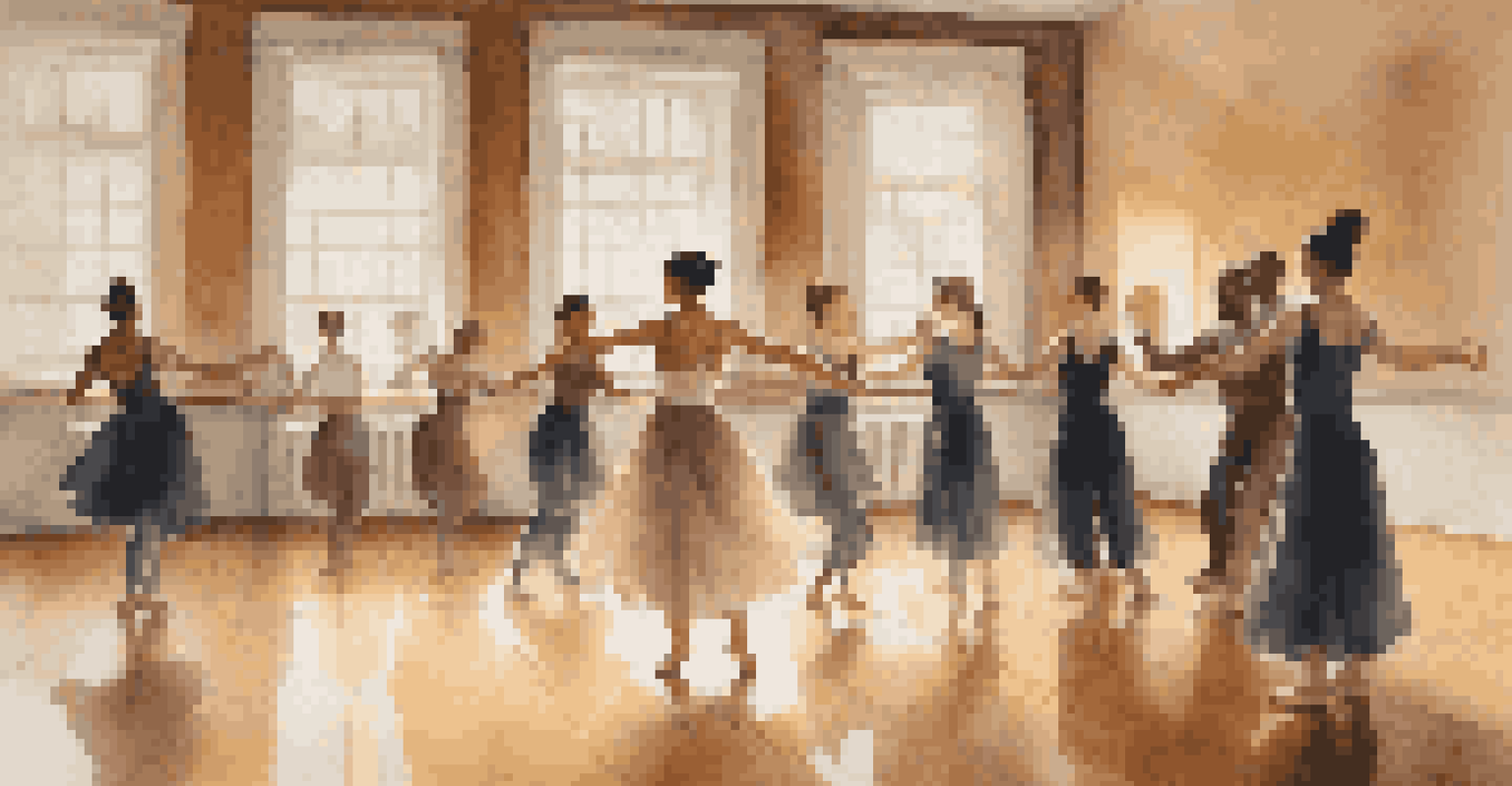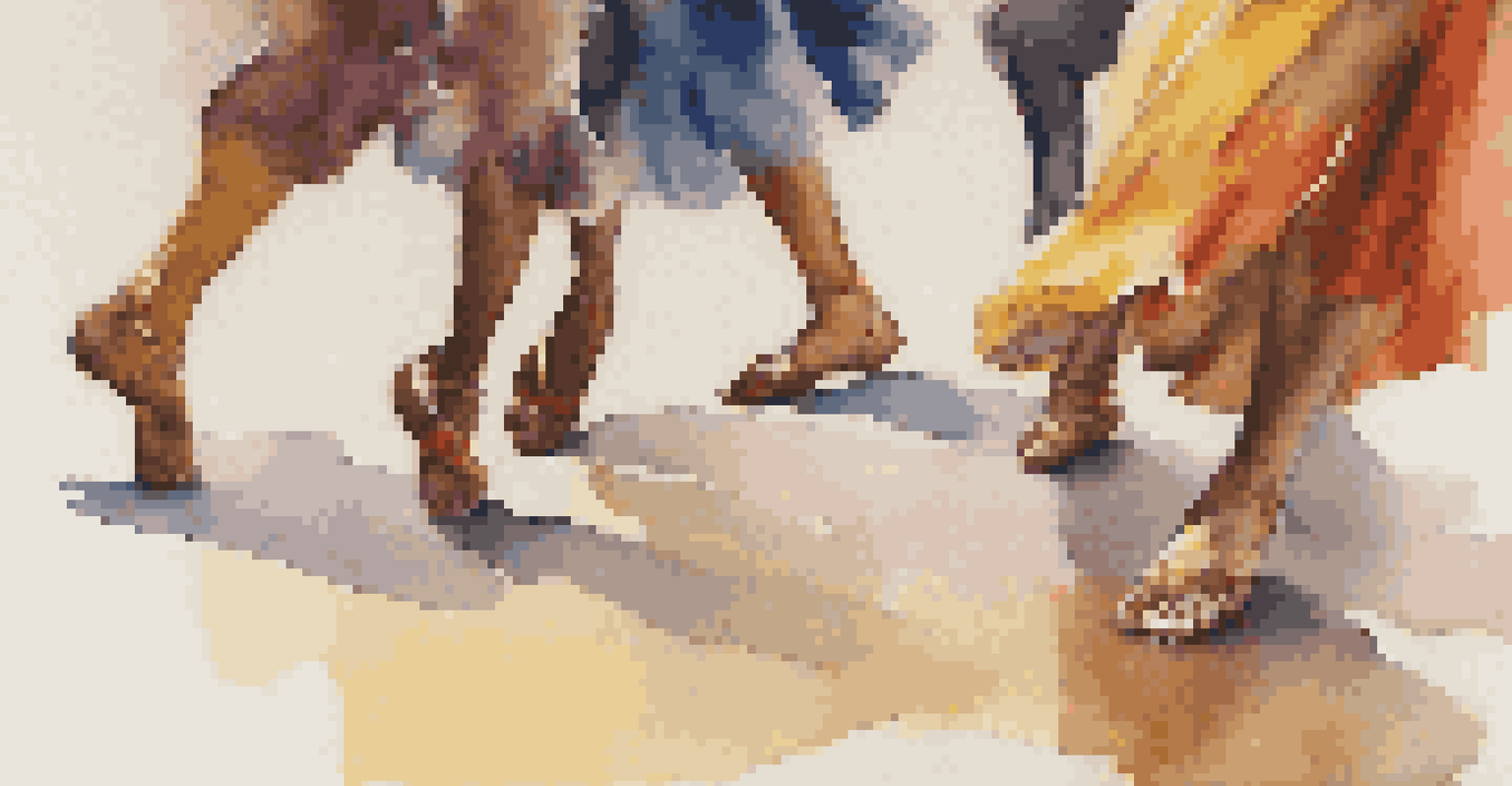Group Dynamics in Improvisational Dance Performance

What Are Group Dynamics in Dance Performance?
Group dynamics refer to the interactions and behaviors that occur within a group. In the context of improvisational dance, these dynamics influence how dancers connect, communicate, and create together. It's like a conversation where each dancer responds to the others, leading to spontaneous movements and expressions.
Dance is the hidden language of the soul.
Understanding these dynamics is crucial for fostering a collaborative environment. A supportive atmosphere encourages dancers to take risks and explore new ideas without fear of judgment. This sense of safety allows for richer, more innovative performances.
Moreover, group dynamics can impact the overall energy of the performance. When dancers are in sync, both physically and emotionally, their collective energy can elevate the experience for both performers and audiences alike.
The Role of Trust in Improvisational Dance
Trust is a cornerstone of effective group dynamics in dance. Dancers must feel comfortable relying on each other to support and enhance their movements. This trust enables them to fully immerse themselves in the moment, leading to a more authentic performance.

For instance, when one dancer takes a bold step, the others need to trust that they will respond appropriately. This mutual reliance creates a beautiful interplay of movement, where each dancer's actions inspire and influence the others.
Group Dynamics Enhance Dance Creativity
The interactions and connections among dancers are crucial for fostering a collaborative and innovative environment during improvisational performances.
Building trust takes time and experience, often developing through shared practice and performances. As dancers grow closer, their ability to improvise seamlessly increases, leading to captivating and dynamic performances.
Communication Styles in Dance Ensembles
Communication in dance is often non-verbal, relying on body language, gestures, and shared rhythms. Each dancer develops their unique style of expression, which contributes to the overall dynamic of the group. Being attuned to these styles enhances connectivity and responsiveness during performances.
The body says what words cannot.
For example, some dancers might use expansive movements to convey energy, while others might prefer subtle shifts to indicate transitions. Recognizing these differences is key to maintaining harmony and fluidity within the group.
Ultimately, effective communication fosters a deeper understanding among dancers, allowing them to anticipate each other's movements and intentions. This synchronicity enriches the improvisational experience and captivates audiences.
Emotional Resonance in Group Improvisation
Emotions play a significant role in shaping group dynamics during improvisational dance. Dancers often draw from their feelings to express themselves, creating a rich tapestry of emotional experiences. This emotional resonance not only enhances individual performance but also binds the group together.
When a dancer conveys genuine emotion, it can evoke similar feelings in others, leading to a shared experience on stage. This emotional connection can transform an ordinary performance into something extraordinary, resonating deeply with the audience.
Trust is Essential in Dance Improvisation
Building trust among dancers allows for authentic movement and a seamless exchange of ideas, enriching the overall performance.
Moreover, the ability to tap into and express emotions collectively allows the group to explore complex themes and narratives. This exploration can result in powerful storytelling through dance.
The Impact of Leadership on Group Dynamics
Leadership in dance ensembles can significantly influence group dynamics. A strong leader can guide the group, fostering an environment where creativity and collaboration flourish. This leadership doesn't always come from a designated role; sometimes, it emerges organically from within the group.
For instance, a dancer who takes initiative and inspires others can shift the entire group's focus and energy. This organic leadership encourages participation and investment from all members, enhancing the group's cohesiveness.
Effective leaders also promote inclusivity, ensuring that every dancer's voice is heard. This inclusivity strengthens group dynamics and fosters a sense of belonging, which is vital for successful improvisation.
Challenges in Group Dynamics During Improvisation
While group dynamics can enhance improvisational dance, they can also present challenges. Conflicting ideas, varying skill levels, and personal tensions can disrupt the flow of creativity. Navigating these challenges requires awareness and adaptability from all dancers involved.
For example, if one dancer feels overshadowed or unheard, it can create tension within the group. Addressing these feelings openly helps maintain a supportive environment and ensures everyone contributes to the performance.
Effective Communication Drives Harmony
Non-verbal communication styles and emotional resonance among dancers create a deeper understanding, enhancing the improvisational experience.
Additionally, recognizing and valuing each dancer's strengths can help mitigate potential conflicts. By celebrating diversity in movement and expression, groups can transform challenges into opportunities for growth and collaboration.
Cultivating Positive Group Dynamics in Dance Practice
Cultivating positive group dynamics starts with intentional practice. Activities that encourage bonding, such as trust exercises or collaborative choreography, can help dancers connect on a deeper level. These connections lay the groundwork for effective improvisation.
Regular feedback sessions can also enhance group dynamics, allowing dancers to express their thoughts and feelings. Constructive feedback fosters growth and improvement, while reinforcing the trust that is essential for improvisational work.

Ultimately, creating a culture of support and open communication leads to a thriving group dynamic. This positive atmosphere not only enriches performances but also nurtures the dancers' personal and artistic development.